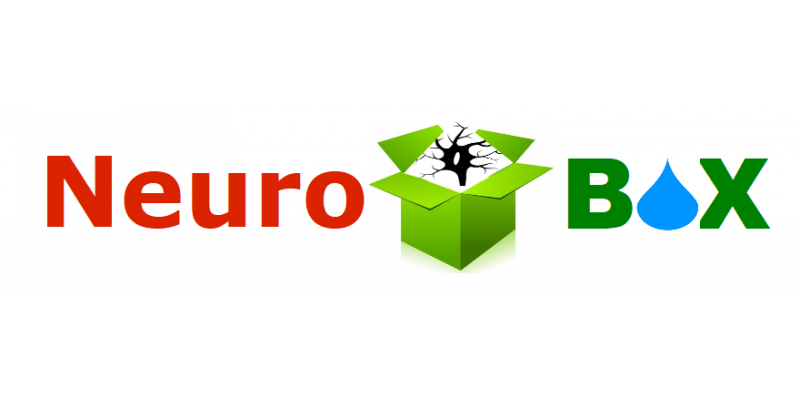NeuroBox – Evaluation of neurotoxic effects in the water cycle - Identification of neurotoxic mechanisms of action (in vivo) for the development of new effect-specific test procedures

Project duration: 2017–2020
Funding: BMBF
Subproject RWTH Aachen and Goethe University Frankfurt
- Prof. Dr. Henner Hollert (PI)
- Dr. Jessica Legradi (Co-PI)
- Prof. Dr. Marc Spehr
- Prof. Dr. Björn Kampa
Coordination at the RWTH Aachen / Goethe University
- Dr. Andreas Schiwy
Project progress
- MSc. Ann-Cathrin Haigis
- MSc. Michael Gundlach
- MSc. Sebastian Malinowski
Network coordinator
Project partner (all subprojects)
- Dr. Tamara Grummt, Dipl. Biol. Jochen Kuckelkorn, German Environment Agency (UBA), Bad Elster
- Prof. Dr. Thomas Braunbeck, Ruprecht-Karls-University Heidelberg, Heidelberg
- Prof. Dr. Henner Hollert - Goethe University Frankfurt, Frankfurt (former RWTH Aachen University, Aachen)
- Prof. Dr. Marc Spehr, Prof. Dr. Björn Kampa - RWTH Aachen University, Aachen
- Dr. Wolfgang Schulz - Zweckverband Landeswasserversorgung, Stuttgart
- Dr. Wolfgang Schulz - Zweckverband Landeswasserversorgung, Stuttgart
- Dr. Eberhardt Küster, PD Dr. Werner Brack - Helmholtz-Centre for Environmental Research GmbH – UFZ, Leipzig
Project webpage: https://www.umweltbundesamt.de/neurobox-bewertung-neurotoxischer-effekte-im
Project description
The aim of the NeuroBox project is to detect anthropogenic trace substances by means of a further development of the test strategy based on the Health orientation value (GOW) developed in the project "Tox-Box" and to evaluate them also concerning their neurotoxicity. This is of great importance in view of the increase in neurodegenerative diseases and the limited therapeutic options of these diseases. By including new central toxicological and the combination of eco- and human toxicological endpoints, the entire water cycle can be taken into account, complex mechanisms of action identified and safe health orientation values derived. The number of environmental chemicals investigated for neurotoxicity to date is small, so there is a discrepancy between the number of substances used and knowledge of their neurotoxic potential. Moreover, many neurotoxic substances also exhibit endocrine activity, so that the neurotoxic effect may be associated with or possibly based on an endocrine mechanism. This is particularly important for developmental neurotoxicity. In order to investigate and reliably evaluate the influence of chemical substances on the complex functions of the nervous system, if possible, all cell types must be considered. This makes it necessary to further develop the test strategies. Due to their ubiquitous occurrence, neuroactive substances are also of ecological relevance and influence for example the reproduction of fish and invertebrates. The zebrafish embryo (Danio rerio) as model organism for the assessment of the toxic and teratogenic potential of chemicals in mammals, including humans, offers the possibility to combine developmental toxicity and neurotoxicity in a single test procedure. However, the exact suitability and limitations of zebrafish as a neurotoxic screening model still need to be investigated, which means that additional test procedures on rodent models need to be used to predict human pathogenicity more precisely and to analyse it mechanistically. Furthermore, the examination of mixtures offers an improvement of the previous single substance evaluation, since the toxic effect of individual substances in mixtures can be masked. Through targeted extraction and chromatographic fractionation of the extracts to reduce complexity and subsequent chemical and biological analysis (effect-directed analysis (EDA)), individual, dominant substances with a specific damage potential can be isolated and identified.
In TP 3 (RWTH Aachen University and Goethe University Frankfurt a mechanistic investigation of the zebrafish embryo model will be performed, which will allow the elucidation of neurotoxic mechanisms of action. Based on this, new methods within the GOW concept for the determination of neurotoxicity can be developed. Comparative experiments on fish and mice will be used to identify new neurological and neuropathological biomarkers in the fish model and new effect-specific, behaviour-based tests will be developed.
Contact

Goethe University Frankfurt
Biologicum, Campus Riedberg
Max-von-Laue-Str. 13
60438 Frankfurt am Main, Germany
Room: 3.319
Phone: +49 (0)69 798 42171
Fax: +49 (0)69 798 42161
Email: hollert(at)bio(dot)uni-frankfurt(dot)de
Former Affiliation:
http://www.bio5.rwth-aachen.de
- Studying at Goethe University
- International applicants
- Faculties
- Overview of study programmes
- Programme for refugees
- GRADE
- Goethe Business School (continuing education)
- Research at Goethe University
- Scientific news
- Goethe Welcome Center (for international researchers)
- Collaborative research projects
- Individual research
- Visiting fellowships
- Endowed chairs
- About the University
- News-in-brief
- University administration
- Campus locations
- Campus life
- University archives (German)
- Rhine-Main-Universities





